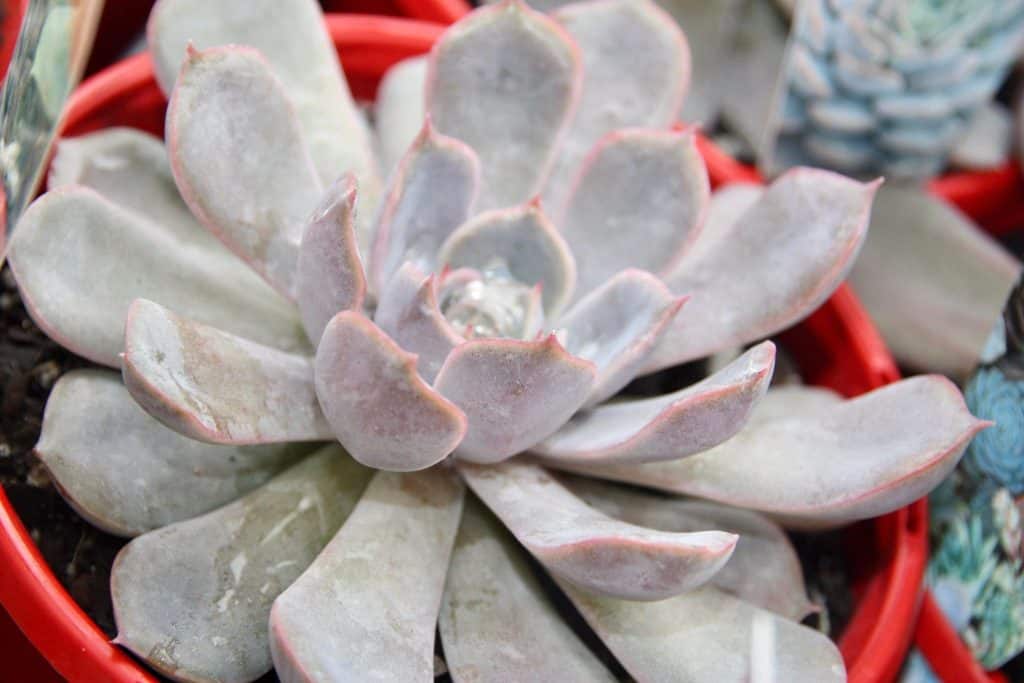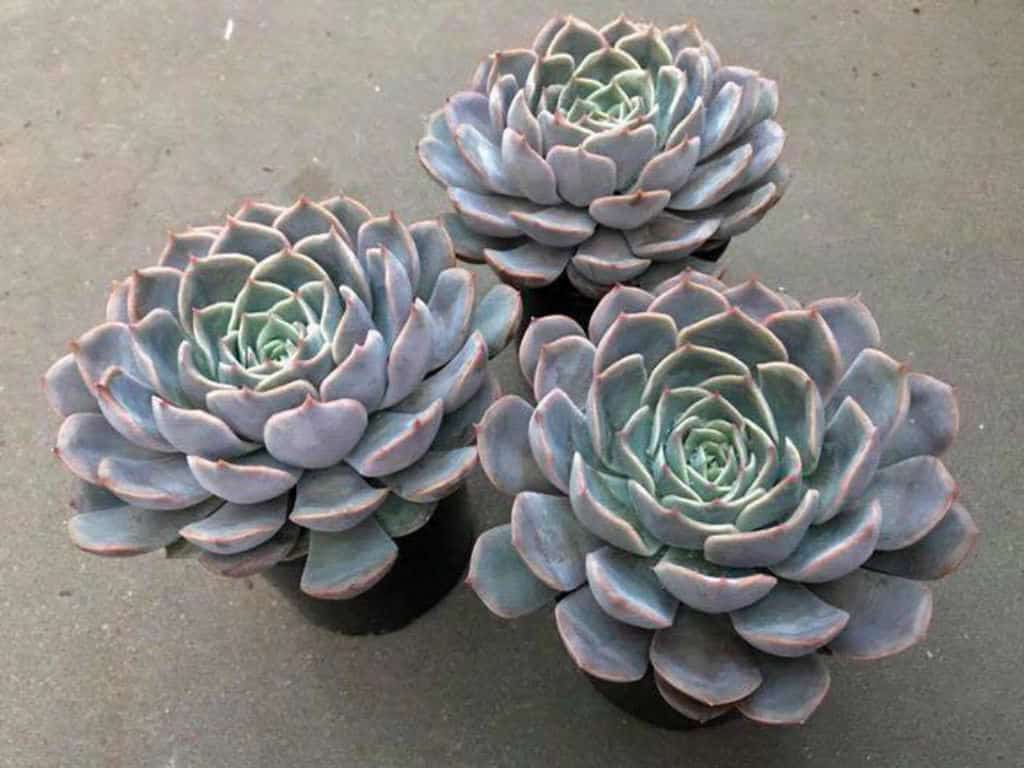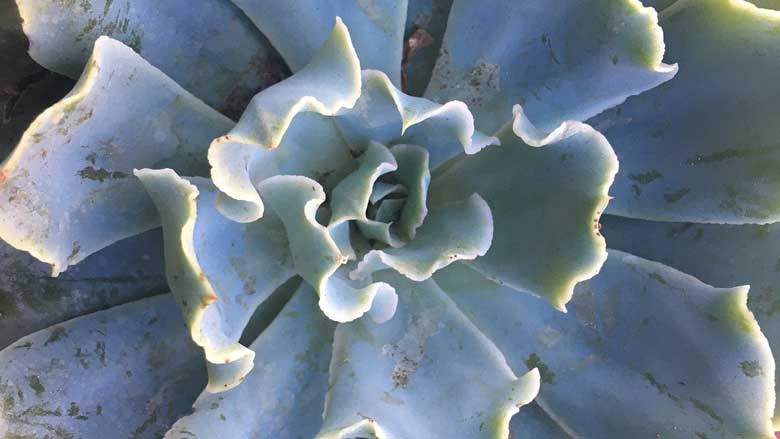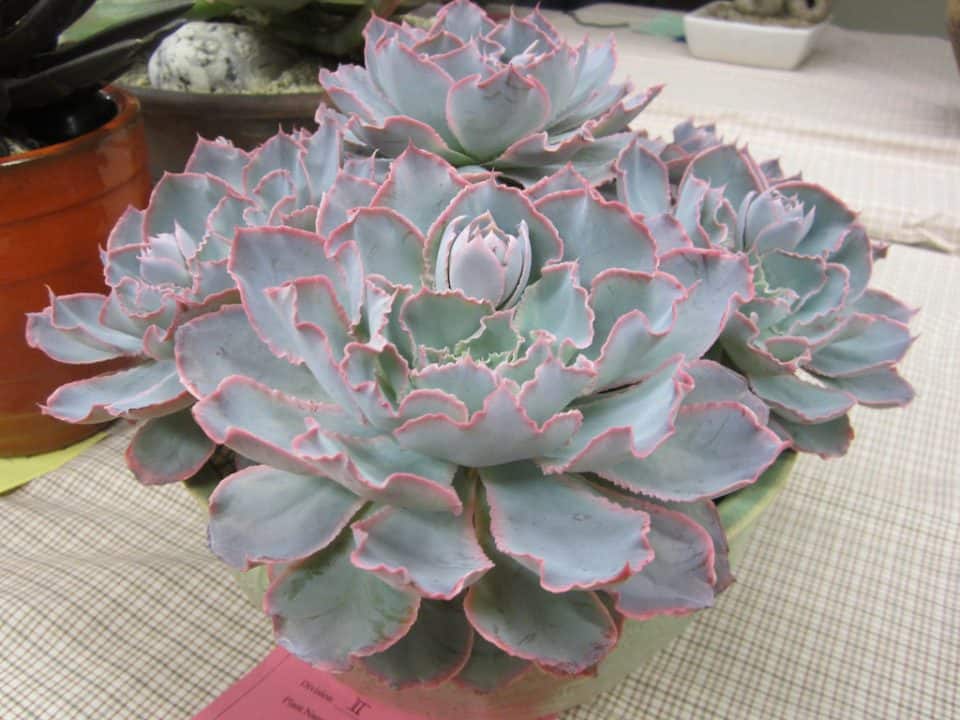Most commonly known as the plush plant, echeveria red velvet, echeveria ruby slippers succulent, or just red echeveria, Echeveria harmsii should be handled with care to keep your houseplant in its best health.
If not given the proper light and water, it can turn brown and shrivel up into an unsightly mess. However, when properly cared for, the Echeveria harmsii can thrive as an excellent addition to any home décor scheme
The Plush Plant (Echeveria harmsii) is an easy, carefree succulent that thrives in most light conditions and looks great in almost any room of the house.
In addition to its drought resistance, plush plant (Echeveria harmsii) is great at storing water so it doesn’t need watering as often as some other succulents or cacti.
Origin and distribution
A native of Mexico, Echeveria harmsii grows in clusters on rocky limestone hillsides from 2000-6500 feet above sea level. It blooms intermittently throughout most of the year. The genus name honors a 19th-century Mexican botanist named Joaquin Echeverria while harm refers to Dr. Edward Harms, another early plant collector of Mexican plants.
Plants are commonly called Harms’ Echeveria and were first described by him in 1844. This is one of several species that make up what is known as Mexican Hens and Chicks or Mexican Snowballs, although it is not actually related to either group.
Mexican Hens and Chicks are popular succulent houseplants due to their ease of culture and attractive rosettes. They grow well in containers where they can be easily moved indoors for winter.
Although they will tolerate bright light outdoors, they generally prefer filtered light or shade during the summer months if grown outside. They have been widely hybridized over time so there are many varieties available with new ones being introduced all the time.
Echeveria harmsii propagation

The red echeveria harmsii is a relatively easy succulent to propagate and is a versatile plant that can be used as an indoor or outdoor plant. Propagation can be done via the division of plants, stem cuttings, or leaf cuttings.
The propagating process takes approximately 3 to 6 weeks to produce adult plants in full growth.
In order to properly propagate red echeveria harmsii, it is important to keep several factors in mind: temperature, light, soil type, and watering schedule. When propagating red echeveria harmsii, make sure you are using a well-drained soil mix with enough organic material for nutrients.
A good ratio for your soil mix would be 50% potting soil and 50% perlite. Make sure that when you water your plants you allow them to dry out slightly between waterings. This will help prevent root rot from occurring during propagation.
Make sure that when taking leaf cuttings you do not leave any leaves on the mother plant when transplanting. These leaves may kill your new baby plant if left on there too long after being removed from its mother.
Echeveria harmsii care information

Echeveria harmsii requires bright, indirect sunlight. It prefers a potting soil high in pumice or other porous materials to promote better drainage. Water sparingly during the winter months when it’s dormant and keep watering to a minimum during its active growing season, usually summer.
Avoid over-watering, as Echeveria harmsii is susceptible to root rot. During its active growing period fertilize with a half-strength solution of balanced liquid fertilizer applied weekly or biweekly.
Light requirement
Plants that can tolerate low light will thrive in places with windows that receive only direct sunlight, such as kitchens and bathrooms. Plants that require medium to high light will grow best in a spot that gets at least four hours of sunlight each day.
Soil/potting mix
When choosing soil, select a well-draining mix with an open texture. The soil should also have a neutral pH. You don’t want anything that is too alkaline or acidic, which could damage your plant’s roots.
Some garden centers and stores sell pre-mixed potting soils for cacti and succulents; if you can find one of these, they are generally very suitable.
Watering
The plant can withstand a certain amount of neglect but will thrive if you provide daily watering. Use rainwater or distilled water to keep salts and minerals to a minimum. Overwatering Echeveria harmsii can lead to root rot, while under-watering causes shedding and death of leaves and flowers.
The potting soil should be dry to touch between watering but never so dry that it is hard, or sopping wet with standing water.
Fertilizer
Fertilize Echeveria harmsii monthly during its growing season, which is spring and summer. Use half-strength or less fertilizer formulated for cacti and succulents, because most types are too high in nitrogen for these plants. The exception is an all-purpose 20-20-20 fertilizer. Fertilize during hot months more often to promote more blooms and faster growth.
Temperature
The Echeveria is a subtropical plant, so it prefers milder temperatures. Keep your Plush Plant in an area with temperatures between 60°F and 85°F during its active growth period, which is during the summer months when days are long and sunny. During the winter months, you can keep your Echeveria as low as 50°F to 55°F.
You can also keep it outside in U.S. Department of Agriculture plant hardiness zones 10 through 12; just make sure that you bring it inside before nighttime temperatures drop below 50 degrees Fahrenheit.
Humidity
The plush plant is native to Mexico and prefers growing in more humid conditions. While Echeveria harmsii can survive in low humidity, it performs better in higher humidity levels; misting your plant every couple of days will help keep it hydrated.
If you want to make sure your Plush Plant stays healthy and blooms frequently, you’ll need to increase its humidity level by keeping it next to a water source.
The ideal humidity range is between 40 and 60 percent. A good way to check if your plant has enough humidity is to feel its leaves; if they’re sticky, it needs more moisture. If you notice brown tips on your plant’s leaves, that means it’s getting too much water.
Pruning
Echeveria harmsii is a succulent plant, meaning it’s used to getting its nutrients and water from water stored in its leaves. Because of their delicate nature, echeverias should be cut using clean, sterilized pruning shears instead of knives or scissors.
The only time you should use a knife or scissors on an echeveria is if it has become damaged and can’t be fixed with clean pruning shears.
If you must use a knife or scissors, make sure they are very sharp so as not to damage any further as well as being disinfected before cutting. You’ll also want to be careful when cutting because of how easily these plants bruise and break during handling.
Make sure your hands are clean before handling them, handle them gently, and try not to move them around too much while cleaning up your cuttings.
When to repot
Repotting your plush plant is typically needed every 2 to 3 years with good care and frequent watering. The best time to repot your echeveria harmsii is early spring or before its active growing season.
Dormancy
Like other members of its family, it requires a dormant period every year. Echeverias do not like to be kept continuously moist. If they are kept constantly wet during their dormancy, they will rot.
As such, they should be allowed to dry out slightly between waterings in late summer or early fall. This will promote healthy growth come spring.
Echeveria harmsii flower & fragrance

This beautiful and popular plush plant succulent produces small, star-shaped flowers in vibrant purple, magenta, or red. Often mistaken for Echeveria derenbergii ‘Afterglow’, Echeveria harmsii has a unique and lovely scent that is reminiscent of grapefruit when crushed.
Growth rate
Plush plant succulent is a fast-growing succulent variety, tall and dome-shaped with rosettes up to 8 inches. It grows up to two feet tall in ideal conditions and produces flowers that range from red to green in color.
It is easy to care for and tolerates periods of drought but not freezing temperatures or heavy frosts. Soil should be very well-drained, can’t handle wet feet or standing water, grows best in sandy soil that isn’t too rich, and drains quickly.
Toxicity
Harmless to humans and other pets. Plush plant echeveria harmsii is not listed on any of the major toxic plant lists, even as a minor risk. This plant does not have sharp edges or spines to cause injury.
USDA Hardiness Zones
The red echeveria thrives best in USDA hardiness zones 8b through 11. If you live outside of these zones, it’s a good idea to grow your plant as an annual or bring it indoors during colder months.
This succulent can be grown outdoors year-round if you live in a warmer climate. It is important to remember that echeverias are sensitive to freezing temperatures and will not survive long periods of time below 32 degrees Fahrenheit.
Pests and diseases
Echeveria harmsii is susceptible to both pests and diseases, especially when it’s grown in a non-suitable environment. The most common echeveria pests are mealybugs and spider mites. Mealybugs look like small, cottony white cotton balls; they stick to leaves and stem joints and suck out plant juices, causing leaf discoloration.
Spider mites are tiny red or yellow dots that spin webs on leaves and stems. They also suck out plant juices, which can cause the yellowing or browning of foliage.
A good way to prevent pest infestations is by creating an ideal growing environment for your echeveria, providing plenty of sunlight, and water regularly but not too much, and fertilizing once every two weeks with a balanced fertilizer during spring and summer months and once every month during fall and winter months.
Conclusion
For a low-maintenance succulent, red echeveria (Echeveria harmsii) can be one of your best options. It needs little sunlight and infrequent watering, making it a perfect choice for those who don’t have much time to care for plants.
As long as you treat it right, you should have minimal trouble with your echeveria. While not all varieties will produce flowers on their own, plush plant echeveria harmsii are still beautiful when they do, allowing you to enjoy their blooms even more than usual!






